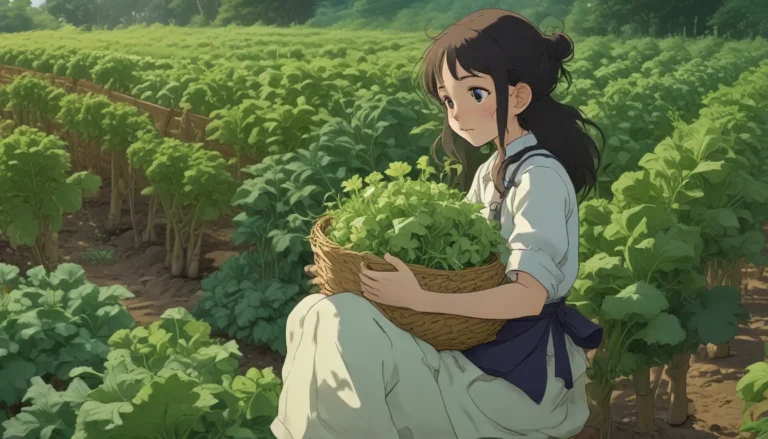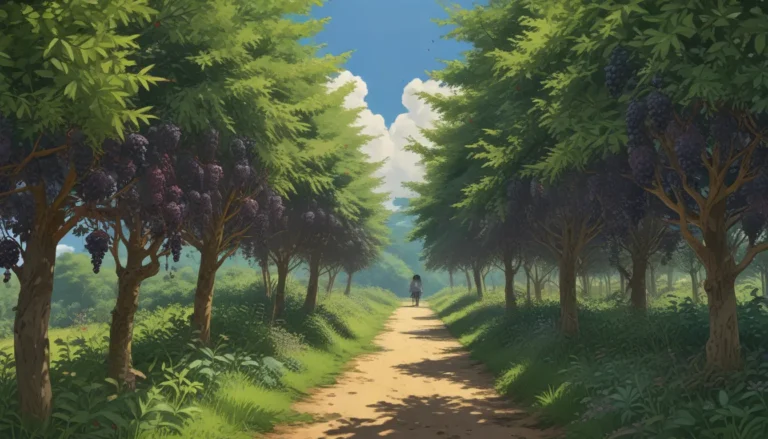13 Delicious Rhubarb Varieties You Need in Your Garden

Rhubarb, also known as Rheum rhabarbarum, is a delightful plant that thrives in the chill of Alaska and beyond. Known for its tart stalks that are often sweetened with sugar, this vegetable is a staple in many gardens. While its stalks are delicious, it’s important to note that the leaves are not edible due to their high oxalic acid content.
With its ability to produce pie-ready stalks for up to ten years, rhubarb is a favorite among gardeners. Whether you’re a seasoned gardener or a beginner, there’s a rhubarb variety perfect for your garden. From heirlooms to hybrids, each cultivar offers unique flavors and growing requirements.
Let’s dive into the world of rhubarb and explore the best varieties for your garden.
Growing Rhubarb: A Quick Guide
Before we delve into the best rhubarb varieties, it’s essential to understand how to grow this versatile plant. Here are some quick tips:
- Rhubarb thrives in well-draining, fertile soil rich in organic matter.
- Make sure to provide consistent moisture without letting the roots sit in water.
- Spacing is crucial, so plant them 3-4 feet apart.
- You can plant rhubarb from seeds, crowns, divisions, or bare root balls.
- For an early harvest, opt for divisions, nursery starts, or bare root balls instead of sowing seeds.
The Best Rhubarb Cultivars for Your Garden
Rhubarb enthusiasts will appreciate the diverse range of cultivars available. Each variety offers distinct flavors and growing characteristics, making it easy to find one that suits your gardening needs. Here are 13 of the best rhubarb varieties to consider:
1. Cherry Red
- Description: A hybrid variety known for its bright red stalks and sweet flavor.
- Growing Zone: USDA Hardiness Zones 2-8.
- Planting Tips: Grow in full sun or part shade for best results.
- Harvest Period: April to June.
2. Chipman’s Canada Red
- Description: Features big, succulent ruby-colored stalks ideal for northern gardeners.
- Growing Zone: Zones 3-8.
- Planting Tips: Plant in fall, winter, or early spring for best results.
- Harvest Period: April to June.
3. Crimson Red
- Description: A favorite in the Pacific Northwest, known for its bright red stalks.
- Growing Zone: Zones 3-8.
- Planting Tips: Grow in full sun for best results.
- Harvest Period: April to June.
4. German Wine
- Description: Excellent for making rhubarb wine, with unique pinky-green speckled stalks.
- Growing Zone: Zones 3-8.
- Planting Tips: Plant in spring and enjoy harvest within a year.
- Harvest Period: Late spring to early summer.
5. Glaskin’s Perpetual
- Description: Ideal for cooler summers, offering sweet stalks from early spring to late fall.
- Growing Zone: Zones 3-9.
- Planting Tips: Start seeds indoors or transplant outside for best results.
- Harvest Period: Early spring to late fall.
6. Hardy Tarty
- Description: Known for producing reddish stalks with a deliciously sour flavor.
- Growing Zone: Zones 3-8.
- Planting Tips: Harvest from late spring through the entire summer.
- Harvest Period: Late spring to summer.
7. Holstein’s Bloodred
- Description: Features red stalks and yields plentiful harvests, perfect for roadside stands.
- Growing Zone: Zones 3-8.
- Planting Tips: Provide plenty of sunshine and harvest from April to June.
- Harvest Period: April to June.
8. KangaRhu
- Description: Brilliant crimson stalks ideal for hot climates, hardy in Zones 4-8.
- Planting Tips: Grow in part shade or full sun for best results.
- Harvest Period: Late spring to early fall.
9. Prince Albert
- Description: Named after Queen Victoria’s husband, known for its juicy and flavorful stalks.
- Growing Zone: Zones 3-8.
- Planting Tips: Harvest from early April to late May.
- Harvest Period: Early April to late May.
10. Riverside Giant
- Description: Cold-hardy with green stalks, ideal for edible hedges or ornamental planting.
- Growing Zone: Zones 2-7.
- Planting Tips: Patiently wait three years for the first harvest.
- Harvest Period: April to June.
11. Sunrise
- Description: Freezes and cans exceptionally well, perfect for storing rhubarb long-term.
- Growing Zone: Zones 3-8.
- Planting Tips: Excellent for preserving rhubarb for winter pies.
- Harvest Period: April to June.
12. Timperley Early
- Description: Easy to force indoors and one of the first varieties to mature.
- Growing Zone: Ideal for Zone 8 and above.
- Planting Tips: Harvest early spring to early summer.
- Harvest Period: Early spring to early summer.
13. Victoria
- Description: One of the most popular rhubarb varieties worldwide, excellent for desserts and cooking.
- Growing Zone: Versatile in both high and low altitudes.
- Planting Tips: Start from seed or root ball for best results.
- Harvest Period: Yearly harvest after planting.
Closing Thoughts
Whether you enjoy the sweet or tart flavors of rhubarb, there’s a cultivar that suits your taste preferences. From bright red stalks to juicy harvests, each variety brings a unique twist to your garden. Experiment with different rhubarb varieties and discover the joy of growing this versatile vegetable. Happy gardening!





